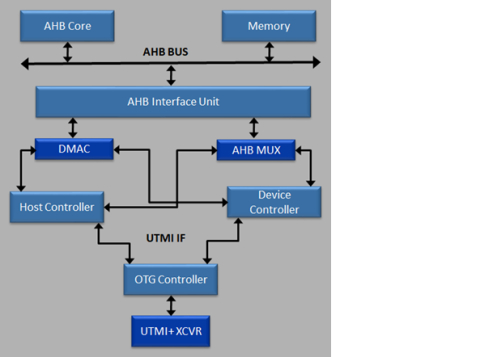USB 2.0 OTG Dual Role Device
Session Request Protocol (SRP) and Host Negotiation Protocol (HNP) are managed by the SRP/ HNP Control Logic. SRP allows a Peripheral (B-device) to request a Host (A-device) to turn on Vbus to start a session, while HNP allows two connected dual-role devices to change roles and eliminates the need for the user to switch cable connections. The Vbus Control Circuit supports the generation of data-line pulsing and Vbus pulsing methods when initiating the SRP as a B-device, the detection of both pulsing methods when acting as an A-device, and the sourcing of a minimum of 8 mA on Vbus. The Vbus Control Circuit also handles the pull-up and pull-down connections to D+ during host/device role switching. The SRP/HNP Logic and Vbus Control Circuit control the operating mode of a USB port as either a host or a peripheral. The Arasan USB 2.0 OTG port requires an external USB 2.0 transceiver with a standard UTMI interface.
View USB 2.0 OTG Dual Role Device full description to...
- see the entire USB 2.0 OTG Dual Role Device datasheet
- get in contact with USB 2.0 OTG Dual Role Device Supplier
Block Diagram of the USB 2.0 OTG Dual Role Device IP Core

USB OTG IP
- USB 2.0 OTG High / Full / Low- Speed Dual Role IP Core
- USB 2.0 PHY TSMC 5nm, 6/7nm, 12/16nm, 22nm, 28nm, 40nm, 65nm, 130nm, 180nm
- USB 2.0 PHY GlobalFoundaries 12nm, 22nm, 28nm, 40nm
- USB 2.0 OTG On-The-Go Transceiver PHY
- USB 2.0 PHY IP, Silicon Proven in TSMC 22ULP
- USB 2.0 OTG High/Full/Low-Speed Dual Role Core






